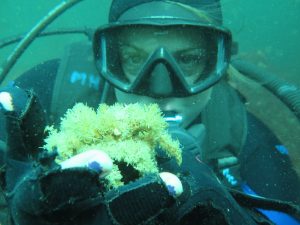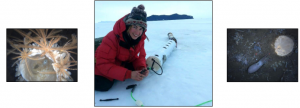By June Shrestha, Ichthyology Lab
Congratulations to 14 students who defended their research theses and graduated from our program this year! Student research spanned across continents, taking us from the kelp forests of California, to the deep seas of South Africa, and even Antarctica!
The following students were awarded a Masters of Science in Marine Science:
- Angela Zepp, Phycology
- Devona Yates, Ichthyology
- Maureen Wise, Chemical Oceanography & Phycology
- Melinda Wheelock, Invertebrate Zoology
- Kristin Walovich, Pacific Shark Research Center
- Dorota Szuta, Benthic Ecology
- Scott Miller, Ichthyology
- Ryan Manzer, Physical Oceanography
- James Knuckey, Pacific Shark Research Center
- Jen Keliher, Invertebrate Zoology
- Jinchen (Martin) Guo, Invertebrate Zoology
- Christian Denney, Fisheries and Conservation Biology
- Paul Clerkin, Pacific Shark Research Center
- Stephan Bitterwolf, Phycology
Read below to learn more about the graduates' research. Feel free to leave a comment if you have any additional questions!
Angela Zepp, Phycology
"Factors driving demography and temporal variability in pH of the acid weed, Desmarestia herbacea"
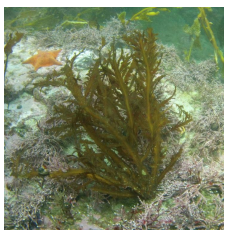
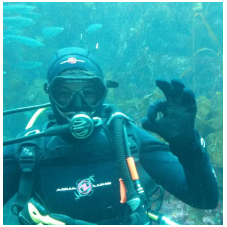
- Angela examined the demographics and pH patterns of a population of the acidweed, Desmarestia herbacea.
- Little is known about the ontogenetic patterns of this species and whether this alga reallocates acid accumulation at various times of its life stages. These patterns help us better understand this species and give us a better understanding of their place in the kelp forest.
Devona Yates, Ichthyology
"Spatial patterns of invertebrate survival in central California kelp forests"
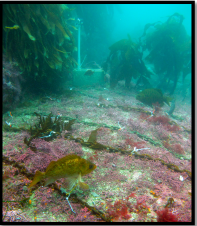
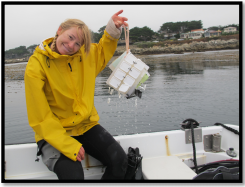
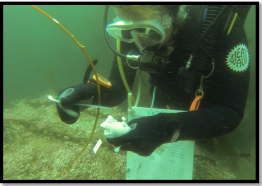
Maureen Wise, Chemical Oceanography / Phycology
"Nutrient Dynamics In Tidally Restricted Regions Of The Elkhorn Slough National Estuarine Research Reserve"
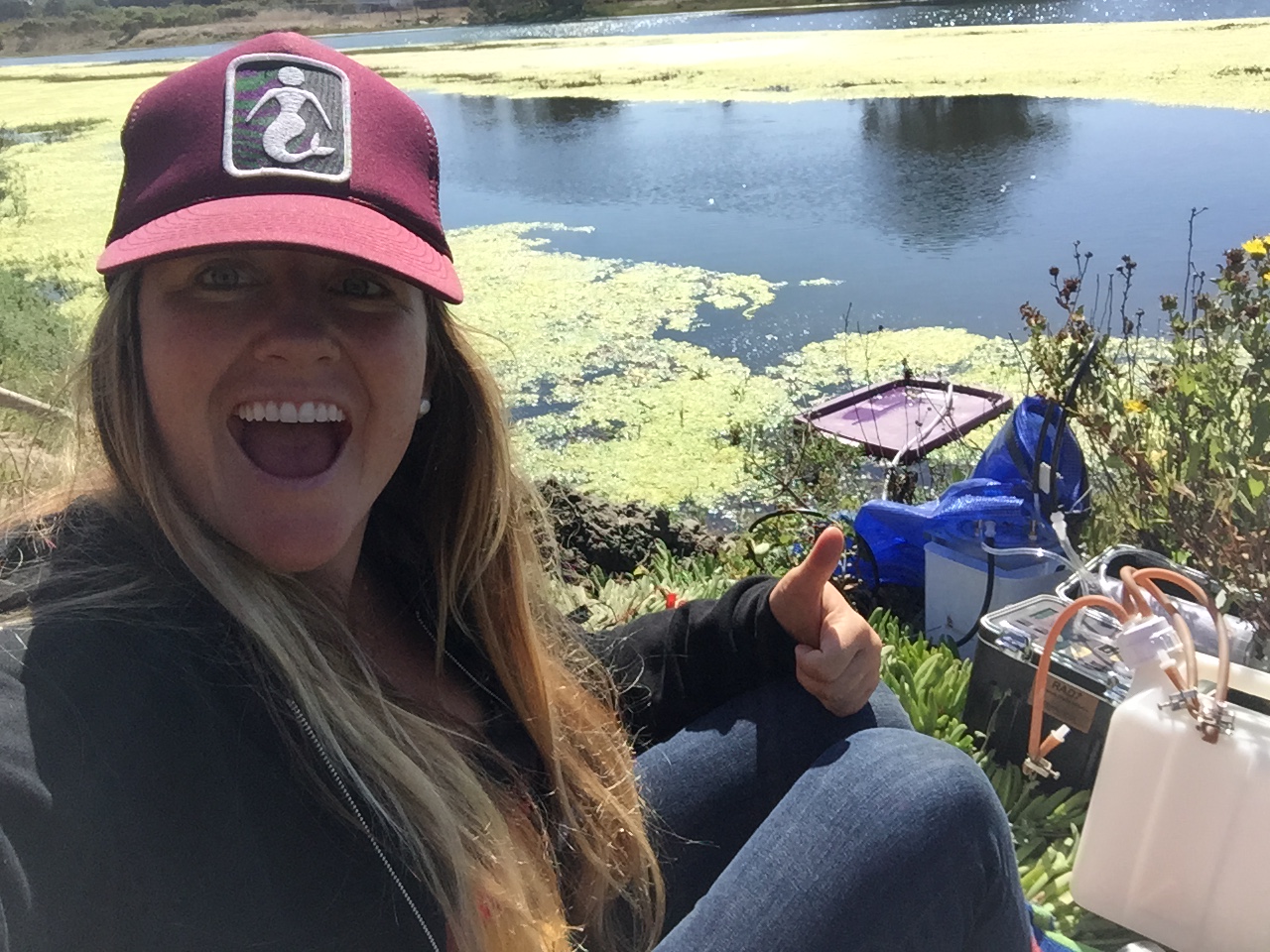
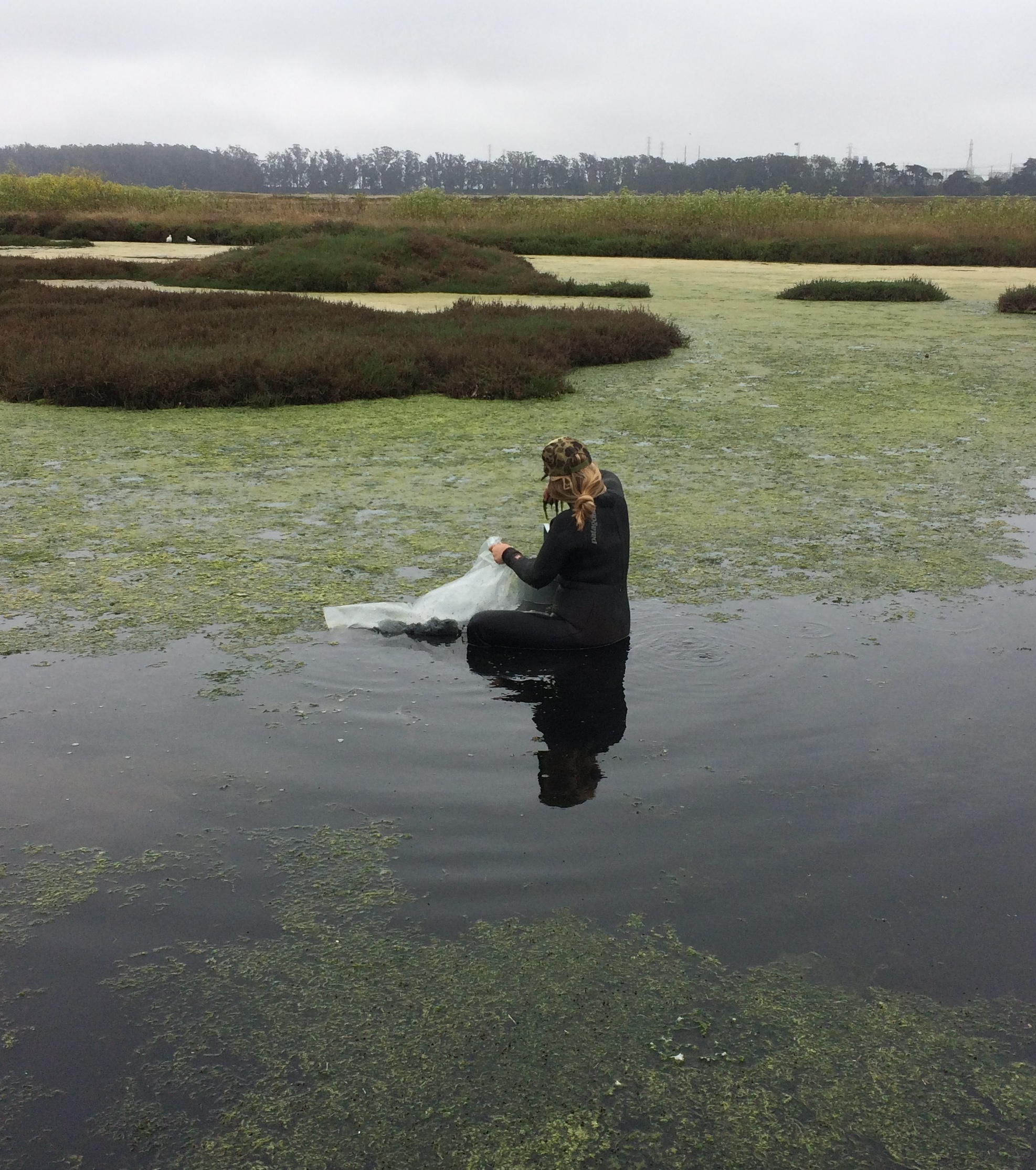
- Maureen quantified nutrient cycling between the surface water, sediments and Ulva biomass within Elkhorn Slough. She was interested in identifying major sources and sinks for nitrate, ammonium and phosphate.
- Surface water flow and groundwater were the major nutrient sources to the system, while surface water flow and Ulva uptake were the dominant nutrient sinks in these tidally restricted systems. Nutrients also exhibited seasonality with a large increase during the dry season, indicating another source of nutrients that differs from precipitation and runoff.
Melinda Wheelock, Invertebrate Zoology
"Shifting species boundaries: Mytilus spp. on the Pacific coast"
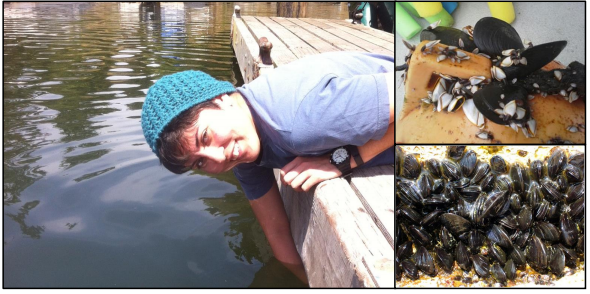
- Introduced bay mussels (Mytilus galloprovincialis) have been spreading northward from southern California for decades, and are replacing the native bay mussel (M. trossulus) as they spread. In the last 10 years, the introduced mussels have almost completely replaced the native species in central California and increased in abundance in northern California.
- Marine debris from the 2011 Japan tsunami carried the introduced mussel (and many other species found in Japan) across the ocean, and provided opportunities for new introductions in Oregon. So far, the introduced mussel has not been found in established mussel populations.
- Increased or more severe drought conditions may facilitate the spread of the introduced species in northern California, since it is known to survive better in warmer, more saline environments than the native species.
Kristin Walovich, Pacific Shark Research Center
"Taxonomic revision of the Short-Nose Chimaeras (genus Hydrolagus) from the Southern African Region"
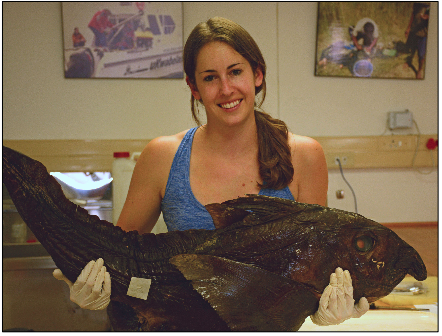
- Kristin studied a group of deep sea fish called ghost sharks, or chimaeras, from Southern Africa. To help determine what species occur there, Kristin collected morphometric and genetic information from museum fish collections all over the world.
- In doing so, she re-described the African Chimaera, identified an unknown species called the Small-eyed Rabbitfish, and described a new species of Ghost Shark! She named it "Robin's Ghostshark" after a South African colleague.
- This information helps identify ghost shark species and will help collect accurate fisheries data.
Dorota Szuta, Benthic Ecology
“Community structure & zonation of Antarctic benthic invertebrates: using a remotely operated vehicle under ice to define biological patterns”
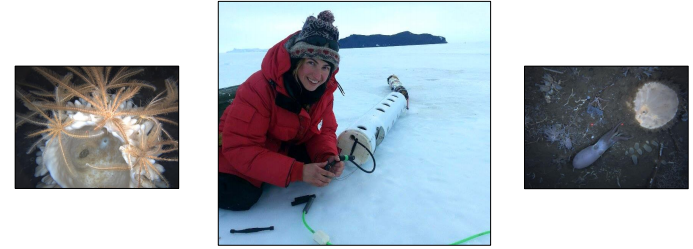
- In this study, imagery of the seafloor at two sites under the McMurdo Ice Shelf and two sites under the seasonal ice in the Ross Sea was collected via remotely operated vehicle (ROV) at depths to 300 m.
- Benthic communities under seasonal ice were different than those under permanent ice shelves, with higher overall species diversity, a greater proportion of suspension feeders, and a degree of magnitude higher abundance.
- Species abundance and diversity typically exhibited a unimodal distribution with depth, reflecting a food limitation at the deep end and potentially ice disturbance on the shallow end.
- Sessile predators, comprised of several species of anemones, increased with depth under the ice shelf, suggesting that they use a range of feeding strategies to adapt to life at depth.
Scott Miller, Ichthyology Lab
"Effects of Oceanographic Variation on the Trophic Ecology of Coral Reef Fishes"
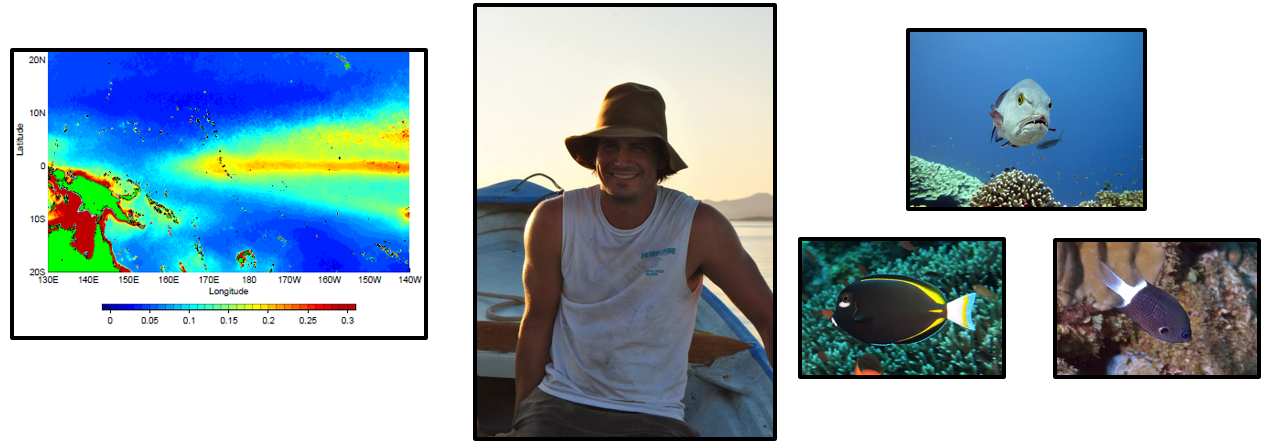
- Scott examined how the diet and trophic ecology of eight species of coral reef fish changed across a productivity gradient in the remote central Pacific.
- Fishes tended to increase or not change their trophic niche width (a measurement of the breadth of resources they utilize) with increasing productivity, indicating more diverse diets at more productive islands.
- Natural variability in primary productivity has strong impacts on trophic ecology of coral reef fishes and these natural influences need to be considered when establishing conservation or fishery goals in these systems.
Ryan Manzer, Physical Oceanography
"Physical Factors Influencing Phytoplankton Abundance in Southern Monterey Bay"
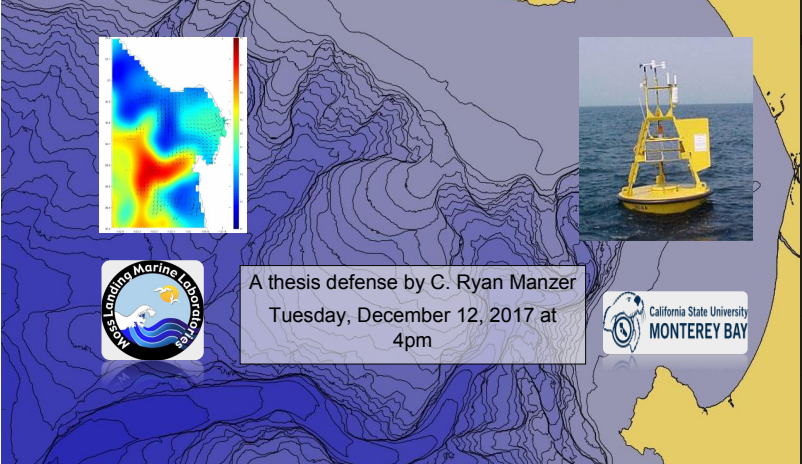
- Ryan investigated relationships between phytoplankton in southern Monterey Bay and physical mechanisms like winds, waves, and currents.
- He found that summer phytoplankton blooms were associated with relaxations and reversals of upwelling favorable winds when those winds are only infrequently interrupted.
- Based on these results, Ryan proposed a mechanism by which recently described circulation patterns, resulting from wind relaxation during periods of upwelling, deliver phytoplankton blooms to coastal ecosystems in southern Monterey Bay.
James Knuckey, Pacific Shark Research Center
"A Taxonomic Revision of Eastern North Pacific Softnose Skates (Arhynchobatidae: Bathyraja ishiyama)"

- James investigated the six currently described species of softnose skate (genus Bathyraja) from California, Oregon, and Washington, and a closely related species from Alaska.
- Due to similarities in appearance between species, the intention of the research was to reject or support the validity of the seven species and determine if some should be combined into one wide-ranging species.
- To do this, James took body measurements and counts of structures and compared the species to each other. Additionally, he combined the body measurements with statistical tests in a novel way not previously used in a taxonomic study.
- James found that all seven species were separate species. A simple key for identification was created to help other researchers identify the species.
- The results of James' research will help inform fisheries management. Skates are currently lumped into one category, "uncategorized skates", in California's fisheries due to the fact that they look similar. It is important to correctly identify species in order to understand which species are threatened by deepsea fishing.
Jennifer Keliher, Invertebrate Zoology
“Microbial Metagenomes from Cryptofaunal Sponges and Ascidians from Moorea, French Polynesia”
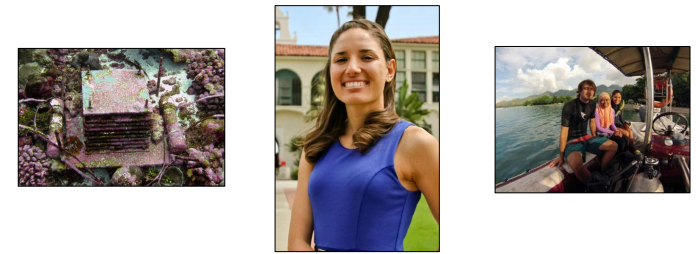
Jinchen (Martin) Guo, Invertebrate Zoology
"Metabarcoding Analysis on Red Abalone (Haliotis rufescens) Gut Microbiome Compositions Fed Different Macroalgal Diets"
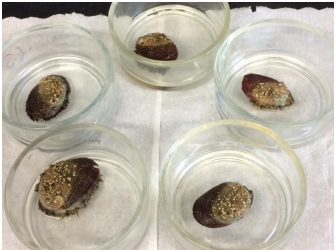
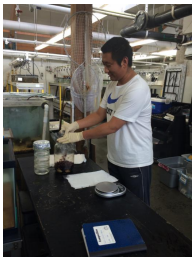
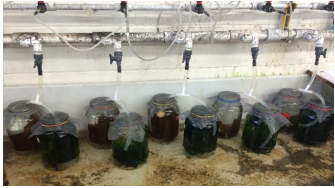
- Martin investigated red abalone gut microbiome compositions fed three fresh macroalgal species: the giant kelp (Macrocystis pyrifera), dulse (Palmaria mollis), and the sea lettuce (Ulva lactuca).
- Red abalone fed dulse had a better growth than those fed the giant kelp and sea lettuce.
- Intestinal microbiome composition was similar to that of stomach samples, and the mouth microbiome composition was similar to that of seawater samples.
- This was the first direct molecular study comparing red abalone gut microbiome compositions fed different macroalgal diets.
Christian Denney, Fisheries and Conservation Biology
"Characterization of a new stereo-video tool to survey deep water benthic fish assemblages with comparison to a remotely operated vehicle"
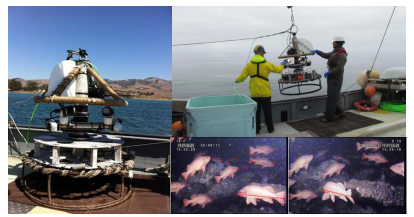
- The stereo-video lander is a new remote visual tool that is capable of accurate length and density estimates in highly complex, difficult to survey, deep-water rocky-reef habitats. Comparisons with an ROV found similar estimates of density for most species.
- The Lander fills a methodological gap that makes it an important part of the toolbox for surveying deep water ecosystems.
Paul Clerkin, Pacific Shark Research Center
"Life History Aspects and Taxonomy of Deep-Sea Chondrichthyans in the Southwestern Indian Ocean"

- Paul studied over 4,000 sharks (31 species) from a remote region of the Southwestern Indian Ocean.
- Several of the species encountered were new to science! Using morphometric data, Paul described three new species of ghost sharks. For each species, data was collected and analyzed to provide life history information such as: sex ratio, length distribution, length of maturity, diet, and geographical distribution.
- Interestingly, overall trends in skewed sex rations and sexual dimorphism were closely related to reproductive strategy (such as live bearing and egg bearing).
Stephan Bitterwolf, Phycology
"Physiological Effects of Nitrate, Light, and Intertidal Position on the Red Seaweeds Mazzaella flaccida and Mazzaella splendens"
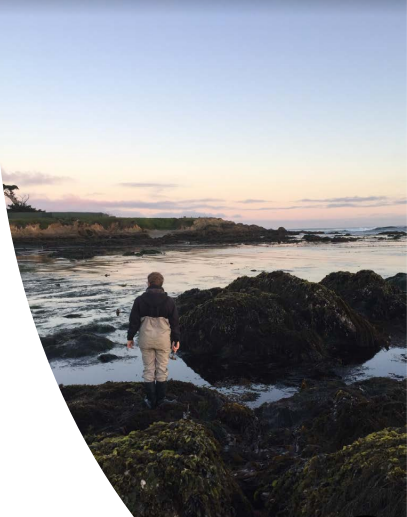
- In the 1970-80s, a study by M. Foster showed that a red alga species could change its color from red to green when transplanted from the low to the high intertidal zone.
- In Stephan's field transplant experiments, he found that this color change is not due to intertidal zone alone. Wave splash, nutrient content, irradiance, and other environmental factors likely influence greening in this species. Nevertheless, these factors were not measured at his three transplant sites.
- In his laboratory experiments, Stephan found that nutrient limitation (nitrate limitation specifically) causes greening in this red alga. This greening stems from the breakdown of accessory pigments called phycobilins. It is likely that the algae repurpose these pigments as a means to survive annual nutrient limitation events.
Congratulations, everyone!
To re-read about the thesis research from the 2016 graduates, please click here.



